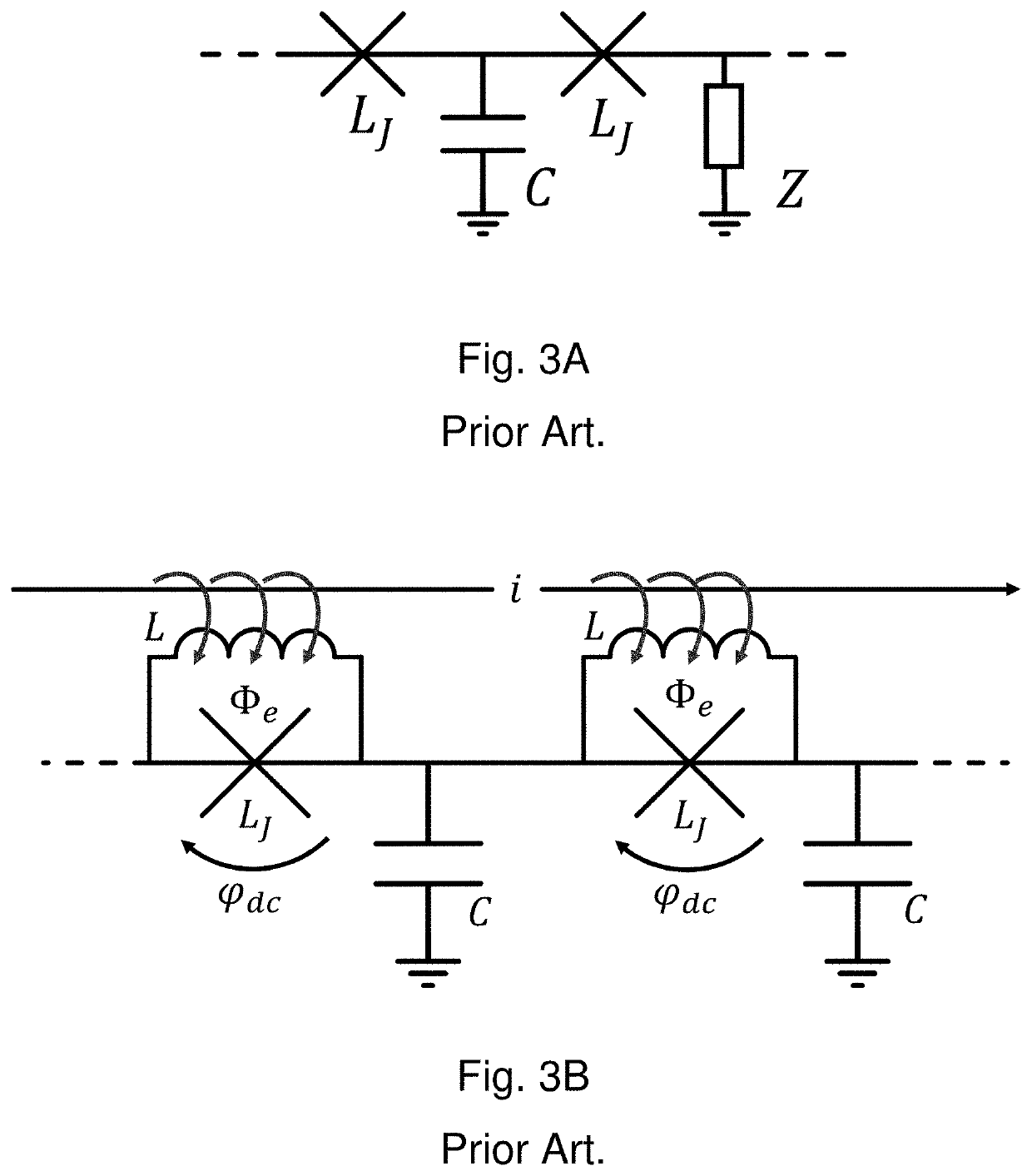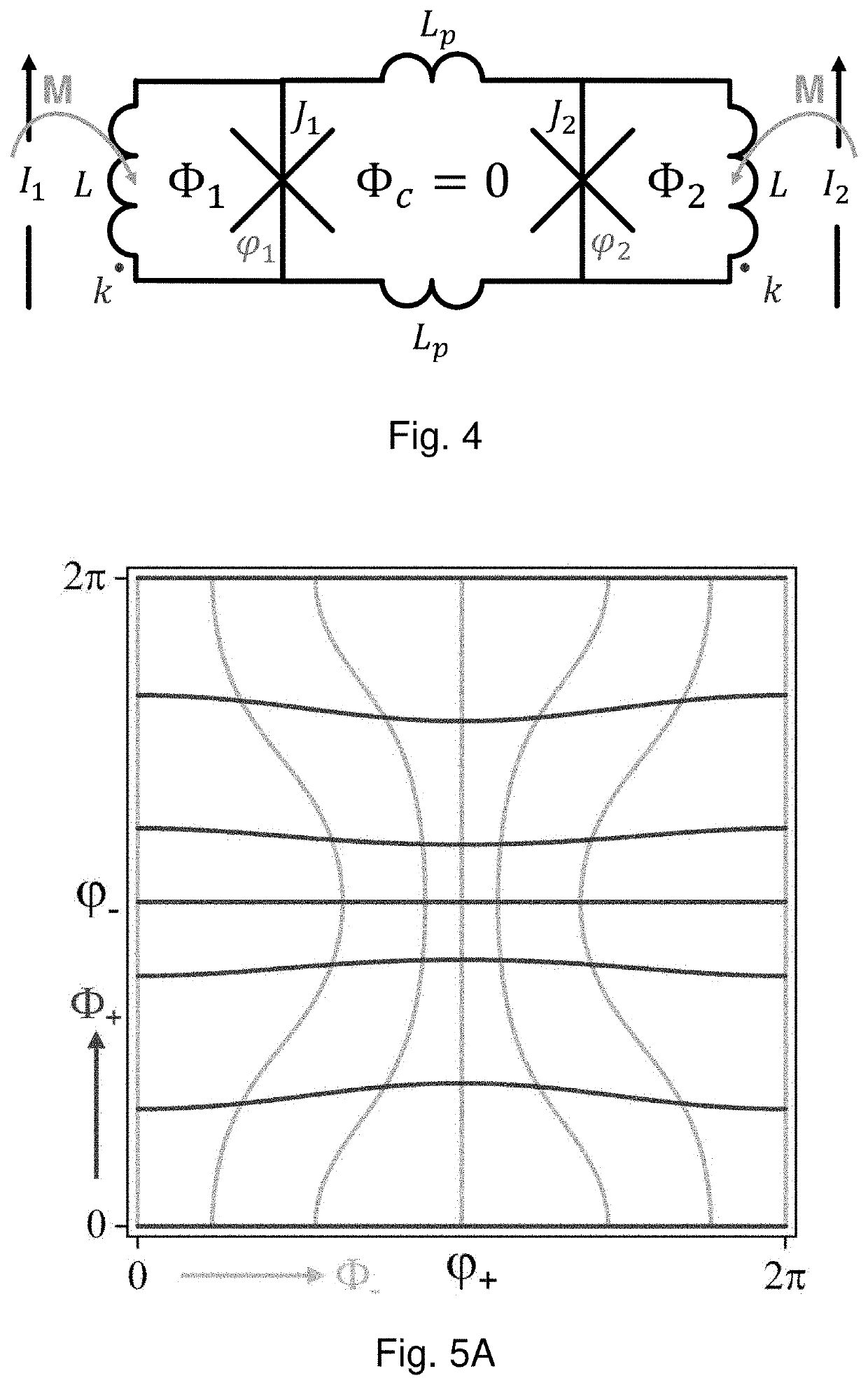Superconducting traveling-wave parametric amplifier
a traveling wave parametric amplifier and traveling wave technology, applied in the direction of superconductor details, superconductor devices, instruments, etc., can solve the problems of difficult to achieve compact amplifiers, regimes outside the scope of the present application, and less than ideal traditional semiconductor transistor amplifiers in this environment. achieve the effect of sufficient nonlinear inductance and low input power
- Summary
- Abstract
- Description
- Claims
- Application Information
AI Technical Summary
Benefits of technology
Problems solved by technology
Method used
Image
Examples
Embodiment Construction
[0095]Superconducting quantum computing demands non-dissipative, quantum-limited cryogenic amplifiers. In order to improve scalability to many qubits, wide-bandwidth amplifiers are required for readout of multiple qubits which can be sensed with a single amplifier. Josephson Parametric Amplifiers (JPAs) were introduced to meet these needs, and proposed in many different designs. As a parametric amplifier, the JPA transfers power from a strong microwave tone (the pump) to a weak one (the signal), as well as to the idle frequency fi=fp−fs (see FIG. 1). It has the advantage of operating at cryogenic temperatures with very low loss, as well as having the strong intrinsic nonlinearity of the Josephson inductance. While achieving good gain and noise performance, JPAs cannot guarantee a wide instantaneous bandwidth for many-qubit multiplexing, because of a lumped-circuit based design.
[0096]An alternative approach is built around a superconducting transmission line, consisting of supercondu...
PUM
 Login to View More
Login to View More Abstract
Description
Claims
Application Information
 Login to View More
Login to View More - R&D
- Intellectual Property
- Life Sciences
- Materials
- Tech Scout
- Unparalleled Data Quality
- Higher Quality Content
- 60% Fewer Hallucinations
Browse by: Latest US Patents, China's latest patents, Technical Efficacy Thesaurus, Application Domain, Technology Topic, Popular Technical Reports.
© 2025 PatSnap. All rights reserved.Legal|Privacy policy|Modern Slavery Act Transparency Statement|Sitemap|About US| Contact US: help@patsnap.com



